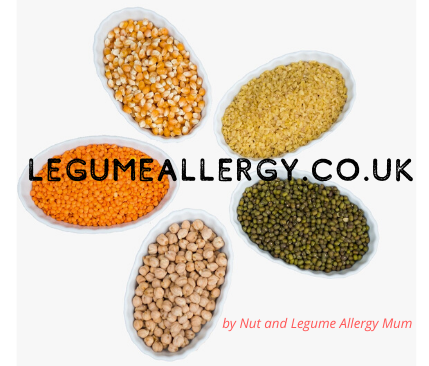The main issues will be sourcing other suitable forms of proteins and fresh vegetables, and of course checking the labels of any pre-packed foods that you buy. Some products such as cooked meats include pea protein or fibre, and ‘gram flour’ (from chickpea) appears in many vegan foods as well as in Indian foods like poppadums and some curry sauces.
Paleo recipes can be a useful resource, as the paleo diet doesn’t allow legumes – but do bear in mind it also omits grains, and does allow nuts. I have found some great ideas from this arena, including a chickpea-free houmous recipe!
For us, cooking from scratch takes out some of the stressors because we are used to sourcing and checking all products to ensure they are nut-free and legume-free. Adapting recipes and substituting things like peas for other vegetables is easy once you get the hang of it. It’s when we eat elsewhere that we have to be more vigilant, when we are relying on others to keep the meal content safe.
Vegetables we use frequently in our legume-free diet include:

Carrots
Sweetcorn
Sweet potato
Broccoli
Cauliflower
Squashes (courgette, butternet squash, pumpkin)
Parsnips
Aubergine
Peppers
Onion.
Things I miss? Peanut butter! Green beans laced with butter and pepper, perhaps. I was never a fan of baked beans or peas and didn’t really do pulses either despite spending many years as a vegetarian. I used to make a delicious spicy lentil lasagne, but I now just make one with meat or with Quorn mince instead (do be aware that some of the vegan Quorn products contain legumes, though). I’m yet to trial a veggie lasagne with actual chopped veg in it, mainly because my youngest is at that age where a chunky, non-blended, unfamiliar vegetable is likely to result in complete refusal!
Undoubtedly the hardest thing about avoiding legumes is that apart from soya, peanut and lupin, they’re not within the top 14 allergens that have to be declared, so they aren’t highlighted in red or bold on packaged products. Sometimes, when eating out, we will be directed to an allergy menu, which doesn’t help us much because our avoidance foods aren’t all listed there.
If you’re new to this, rest assured that reading every label, every time, and in full, does become commonplace. You’ll also come to know the brands you trust and the products that are less likely to include your allergens.

